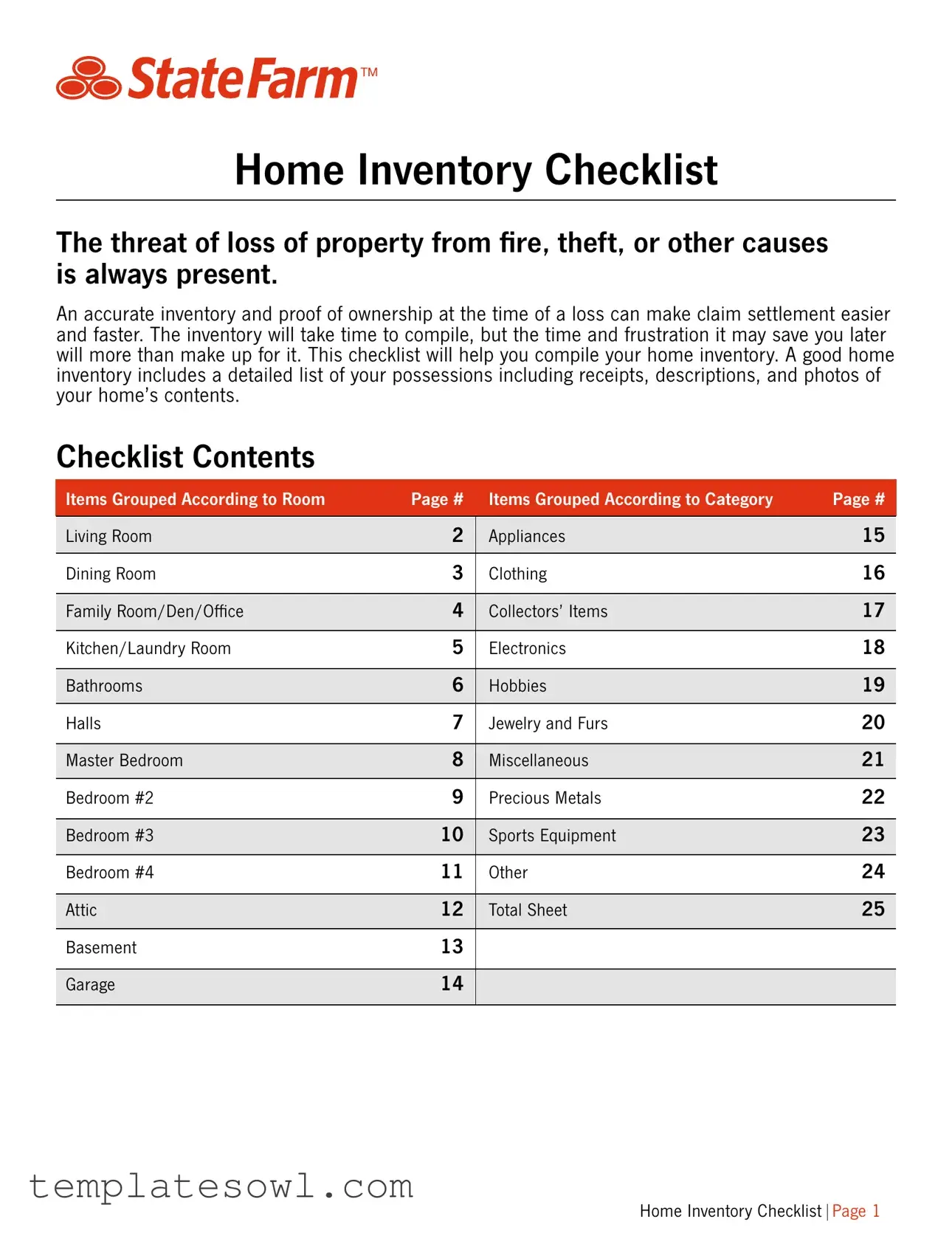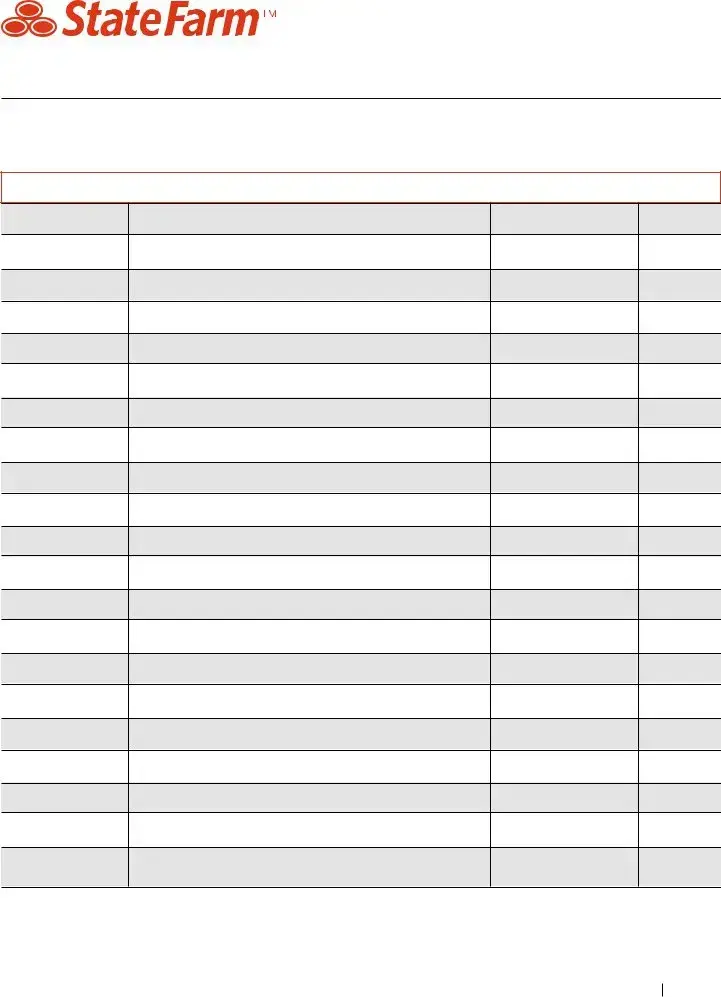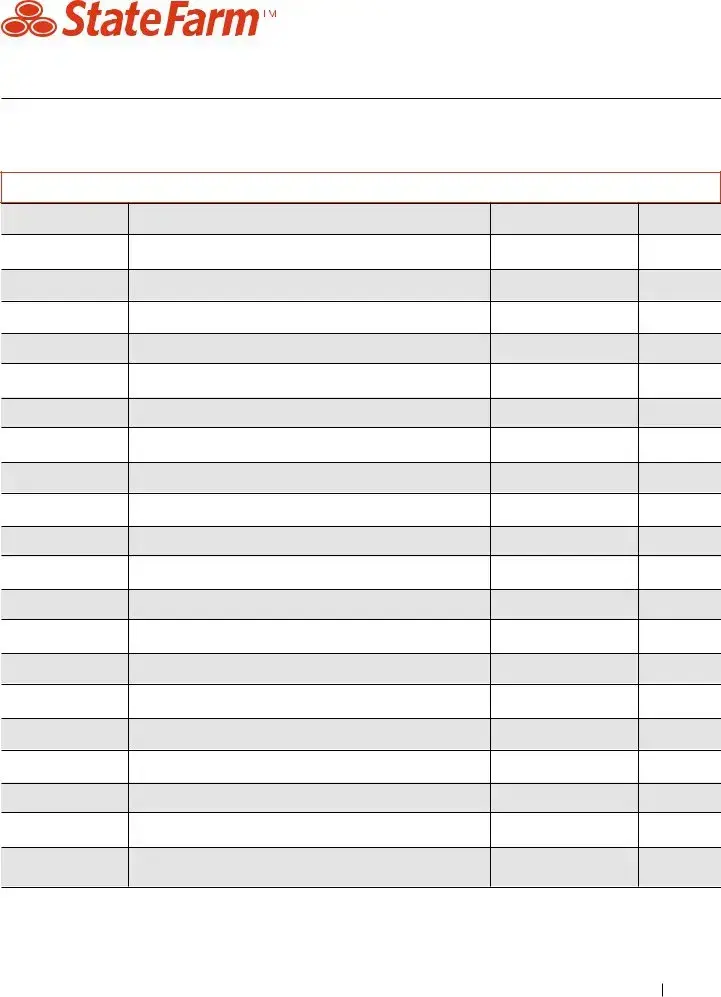When filling out the State Farm Personal Worksheet, many individuals inadvertently make common mistakes that can lead to complications later on. Recognizing these pitfalls is key to ensuring that you have an accurate inventory of your possessions, helping make any future claims smoother and more efficient.
One prevalent mistake is not being detailed enough in the descriptions of items. For each possession, it is essential to include not just the name of the item, but also its age, condition, and any pertinent details that enhance its value. For instance, instead of simply writing “sofa,” a better description would be “leather sofa, purchased in 2018, good condition.” This level of detail can drastically improve your documentation.
Failing to document valuable items is another common error. Many people overlook jewelry, collectibles, and expensive electronics. Including these high-value items in your inventory with precise descriptions and receipts can save a lot of headaches during the claims process.
Another frequent mistake is not updating the inventory regularly. Life changes, such as new purchases or disposals of items, should be reflected in your worksheet. An outdated inventory may leave gaps when it comes time to file a claim, which could affect the compensation you receive.
Omitting photographs is yet another oversight. Images serve as visual proof of ownership and can be particularly helpful in validating the condition of your belongings. Capturing high-quality photographs of your items—especially those of high value—can greatly aid in expediting claims.
Many individuals also neglect to store the completed worksheet in a safe place. Simply keeping it in the house can be risky, as the very reason you create the inventory is to protect against disasters like fire or theft. A better strategy is to keep a copy in a secure location outside the home, such as a safe deposit box or with a trusted friend or relative.
Not assigning a value estimate to each item can make it challenging to determine the total worth of your belongings. For effective insurance coverage, provide an estimated value based on purchase price and current market value, whenever applicable.
People also often neglect to review their insurance policy for any specific requirements. Some policies may request particular formatting or detail in your personal inventory, which if overlooked, could jeopardize your coverage.
Using vague categories instead of specifying items can lead to confusion. When grouping items by room or category, try to break it down as specifically as possible, rather than generalizing. For instance, instead of listing “clothing,” break it down into categories such as “shirts,” “pants,” “coats,” etc.
Finally, not taking enough time to conduct an inventory can lead to important items being forgotten. Rushing may cause individuals to overlook key possessions. Dedicate sufficient time, and perhaps tackle the task room by room to ensure thoroughness.
Each of these mistakes can complicate future claims with your insurance provider, so taking the time to avoid them will significantly benefit you in the long run. A well-completed State Farm Personal Worksheet ensures that your assets are protected and accurately documented.










